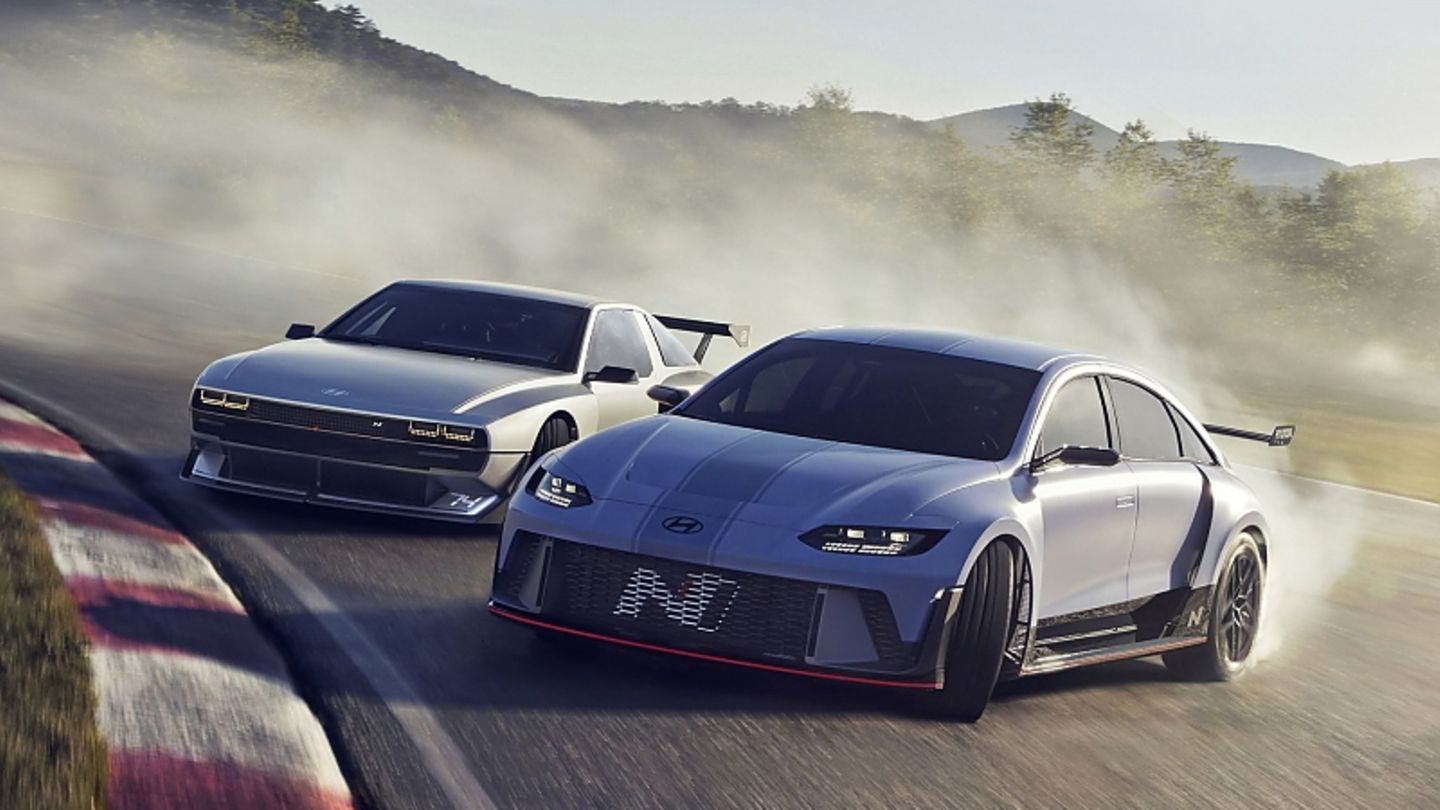Hyundai N goes electric. The power version of the Ioniq 5 will start next year. The prototype of the Ioniq 6 N as a Taycan competitor is already being tested and should roll into the dynamic ring by 2024 at the latest. And a dynamic hydrogen car is also already doing its test laps.
Actually, it was only a matter of time before the Koreans electrified the N symbol. Now it’s official. Next year there will be an N version of the Ioniq 5. The top variant of the Stromer with all-wheel drive and 239 kW / 325 hp is anything but underpowered and is dynamically convincing. Now the N version is to fully exploit this potential and compete with the Porsche Taycan from next year. Probably a year later, the Ioniq 6 N complements the dynamic E duo.
A prototype of the Ioniq 6 N with the Star Wars-like name RN22e is already doing its test rounds. Since this rolling laboratory shares the E-GMP platform and drive train with the Ioniq 5, the technical data already give an idea of how much power the Ioniq 5 N wants to get into the ring with. The 4.91 meter long car has all-wheel drive 430 kW / 585 hp, 740 Newton meters of torque and reaches a top speed of more than 250 km/h. So quite competitive. The energy comes from the well-known 77.4 kilowatt hour battery.
However, a sporty variant of a vehicle is not only characterized by longitudinal dynamics. Cars like the Hyundai i30 N and the i20 N are particularly impressive when it comes to agility. Of course, this shouldn’t be any different with the Ioniq N versions. However, the weight of an electric vehicle is significantly higher. That’s why the engineers use parts from the 3D printer to make the car lighter. In addition, the Koreans use a system with two clutches for the dynamics-enhancing torque vectoring. This has the advantage that you only need one electric motor per axle, which corresponds exactly to the E-GMP platform. The system consists of an inner and an outer clutch that can actively distribute the torque to the individual wheels. This makes the second electric motor superfluous.
Since this mass also has to be decelerated, four-piston brakes with powerful 400 millimeter discs are used. Stability is a big issue, which is why the RN22e is tested on the racetrack under the toughest conditions. The cooling of the brakes is also on the test bench, which has to be optimal to prevent fading. That is why the front splitter and the cooling channels have been optimized in the prototypes. The regenerative brakes are used to improve cornering.
The second prototype, dubbed the Hyundai N Vision 74, pays homage to the 1974 Hyundai Pony Coupe concept, designed by Giorgetto Giugiaro. Garnished with elements of the Hyundai N 2025 Vision Gran Turismo from 2015. A fuel cell drive with more than 500 kW / 680 hp and a torque of 900 Nm is hidden under the handsome shell with the powerful rear wing. The fuel cell controls 85 kW / 116 PS (maximum 95 kW / 129 PS). The battery has a capacity of 62.4 kWh and the hydrogen tanks hold 4.2 kilograms. This means that the bolide has a top speed of over 250 km/h and has a range of more than 600 kilometers. In the Hyundai N Vision 74, two electric motors provide the rear-wheel drive and thus enable active torque vectoring through the targeted control of the respective electric motor. It will be exciting to see whether and how this concept will be implemented for series production. We wish it.
Source: Stern
I am a 24-year-old writer and journalist who has been working in the news industry for the past two years. I write primarily about market news, so if you’re looking for insights into what’s going on in the stock market or economic indicators, you’ve come to the right place. I also dabble in writing articles on lifestyle trends and pop culture news.




